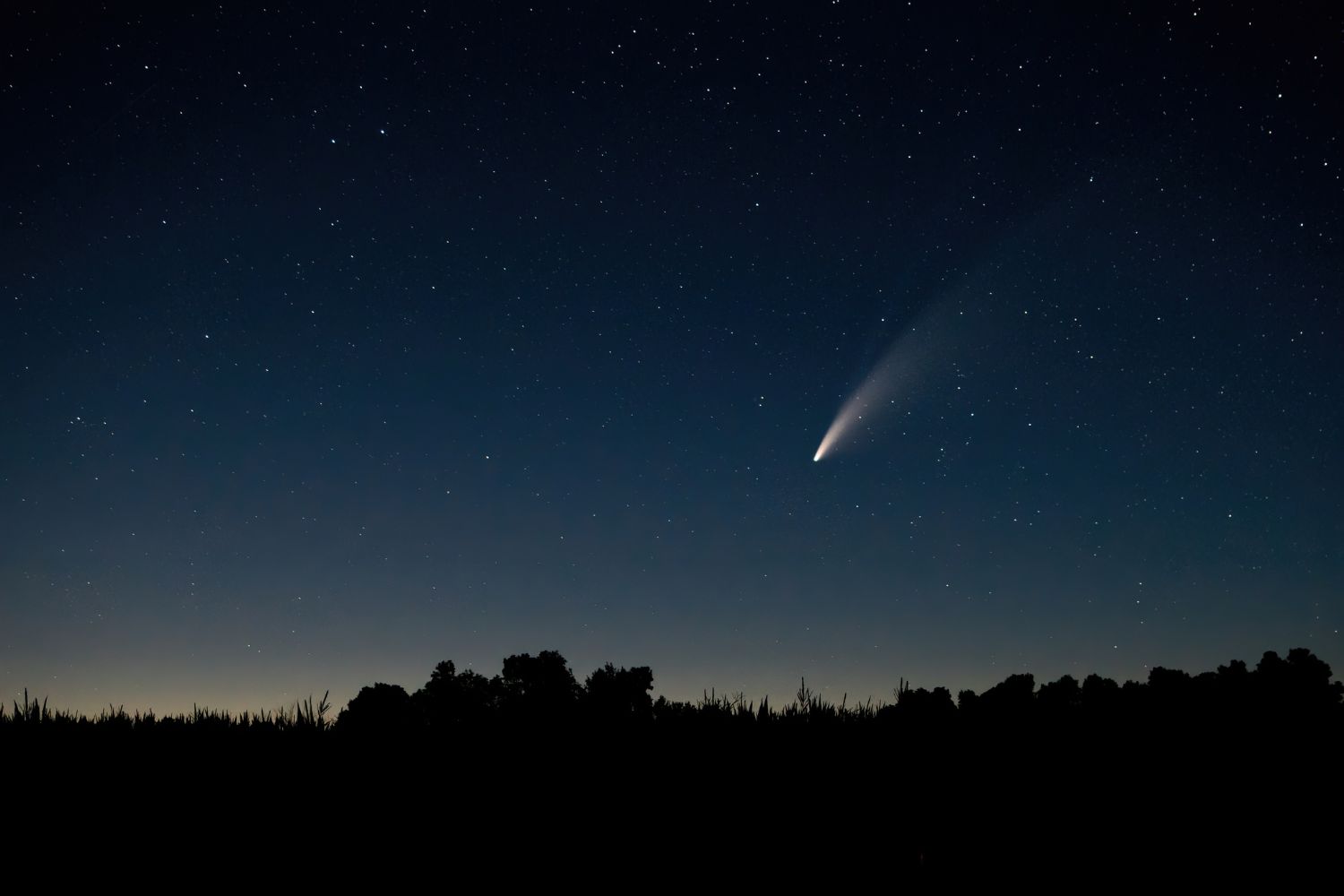Unmissable and beautiful Orionids are coming: from October 20th to 23rd, October's splendid meteors will be at their peak giving us three romantic evenings. This year viewing conditions are excellent, so let's prepare a long wish list!

The splendid Orionids, October’s shooting stars, are arriving: from the 20th to the 23rd of this month the meteors will be at their peak, giving us three romantic evenings. This year the viewing conditions are excellent, so let’s prepare a long wish list!
As the UAI explains, this year we can really count on the Orionids, which will be at their peak in total absence of the Moon, in its New phase precisely on October 21st.
What the Orionids really are

©Halley Multicolor Camera Team, Giotto Project, ESA
As stated on the American Meteor Society website, every October the Earth crosses through the debris stream coming from Halley’s Comet, producing the annual Orionid meteor shower (by the way, the outbound part of this same debris trail also brings us the Eta Aquarids shower every spring).
Specifically, the Orionids activity begins in early October, but it’s only mid-month that Earth encounters the densest part of the stream. In reality, the shower is generally of medium intensity, producing at most 15-20 meteors per hour under dark sky conditions, only on rare occasions has the rate tripled.
Where and how to observe the 2025 Orionids

©Stellarium
This year, the maximum is predicted for the mornings of October 21st to 23rd, in total absence of the Moon, which will be New precisely on October 21st. Away from sources of light pollution, observers could therefore see up to 20 Orionid meteors per hour.
The Orionid meteors will appear when their radiant, that is the point in the sky from which they seem to originate, rises above the eastern horizon. The map shows the sky on October 21st, 2025 at approximately 11:00 PM, but the best viewing actually occurs between 1:00 AM and dawn, when the radiant exceeds 30° above the horizon.
On the nights of maximum activity, the Orionids radiant is located in the northeastern part of the constellation of Orion (from which the shower takes its name), 8 degrees north of the bright star Betelgeuse.
This year the viewing conditions will be excellent – writes the association – The New Moon on October 21st will guarantee dark skies without lunar interference during the early morning hours. The only obstacles will be cloud cover and city lights […] For an optimal experience, find a safe and dark location, away from city lights. The darker your surroundings, the more meteors you’ll see
Let’s prepare many wishes, we add.
Sources: UAI / American Meteor Society
